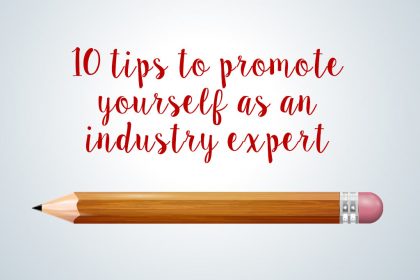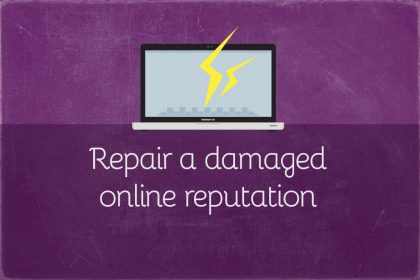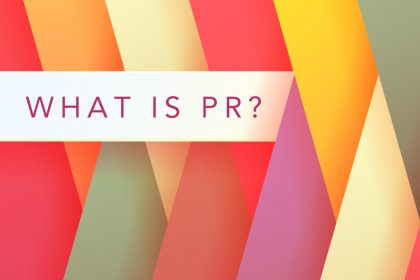Five small steps to kickstart your PR in 2018
Love to see your business (or you!) featured in the press this year? Discover five small steps to kickstart your PR in 2018.
There are many things I love in life. I love my sons and my husband. I love our two crazy dogs and living by the sea. I love bags and shoes, as well as coffee and vodka – not drunk together though.
I also love PR and have spent the past two decades working with global broadcasters, inspiring charities, hotel chains, fashion brands, IT businesses, adventurous entrepreneurs and savvy start-ups. Over that time I have seen first-hand the power of PR.
The reality however, is that PR doesn’t happen by magic and, despite what you may have heard, it isn’t free advertising. It’s a long-term programme that’s about building relationships, telling a story and receiving personal recommendations from the media, rather than paying for column inches with cold, hard cash.
Five small steps to kickstart your PR in 2018
With a to-do list longer than the run school, meetings to attend and orders to complete, PR might not be on your radar. But if I told you it could make a real difference to your business, maybe you’d consider it.
As well as building your profile and boosting sales, PR could lead to exciting partnerships, new opportunities and help position you as an expert in your field.
To help you kickstart your PR in 2018. Here are five small steps you can start taking today.
1) Know your target audience
Knowing your target audience is at the heart of any PR strategy because they’re the people who will buy your products and use your services.
Once you know who you are talking to, it’s time to research what media they use. Whether it’s newspapers, trade magazines, consumer titles, blogs or social media platforms, find out what they like and make sure you know it inside out and back to front.
My life coach client, Chloe Leibowitz, predominantly works with women between the ages of 30 and 55 in Buckinghamshire. They are interested in health and wellbeing and tend to read newspapers, glossy magazines and lifestyle websites.
As a result of pin pointing her target audience and tailoring her PR accordingly, Chloe has been seen in the i-Paper, Daily Express and Natural Health Magazine. The result has been an increase in traffic to her website, new client sign ups and a regular slot on Marlow FM.
2) Set up a media database
I’m not talking about creating a fancy spreadsheet or buying expensive software, but if you want to feel in control of your PR then you need a target media list.
This will ideally include bloggers and social media influencers as well as more traditional journalists who work on newspapers (local, regional and national), magazines, trade titles and online.
Find contact names online, look on Twitter for details of freelance journalists, and use your local library to flick through magazines and papers so you can really get to know your stuff. I actually have a stock of magazines and newspapers in my office so I can keep up to date with formats, features and writers, and I refer to them before pitching stories and ideas.
I use Excel to keep my database up to date, and as well as the basics (name, email address and phone number), I add social media details, the contact we have had, plus any resulting coverage they have produced for clients. Oh, and when coverage is generated, I always send them journalist a thank you.
3) Know what’s new
Of course, to get covered in the press, you either need a proactive story (something you have done) or you need to be reactive to what is happening in the wider world.
Writing a book, opening a new shop, launching a children’s clothing range or record annual sales are all ‘potential’ stories, but think about whether they will be of interest to a journalist before taking the idea further.
Budget Day, Brexit, minimum wage levels, Kate Middleton’s trainers and the latest superfoods are often in the new news, so if you can offer comment, go for it!
Awareness days and seasonal events can be another way of getting your voice heard, so do your research and build a calendar that you can tap into when other things are quiet.
3) Write a press release that works
The debate over whether the press release is dead continues to rage but for me personally, a well written, targeted release is often the first step towards selling in a story, building a relationship and getting into the media.
Use an attention-grabbing headline, tell the whole story in the first paragraph (tough but possible), include stat’s, add a quote, keep it to a page, leave out the fluff and ensure when you send it to a contact, it is relevant!
More often than not, journalists and bloggers prefer to be contacted by email and calling them to ask if they have had your press release, isn’t always appreciated. Yes, if they are a great contact and it is an outstanding story, nudge them, but in the main, if what you have to say is of interest, they will be in touch.
Oh, and make sure you have decent images available to send out as this can make or break a story being covered.
Find out how to write a press release that gets results
4) Get involved with Twitter
Twitter can be a fantastic PR tool and the #journorequest hashtag is an great way to find potential media opportunities. With many media outlets, journalists and bloggers active on the platform, it’s easy to find them, follow them and communicate with them – just don’t stalk them.
Learn how to be a Twitter expert in just a few hours in our online course
5) Be patient
There is no doubt that PR works, but it takes time and patience is a virtue. So do the groundwork, keep an eye on the news and don’t give up.
Good luck and do look out for me on Twitter!
You can read more about Natalie at her website and her second book, The PR Toolkit for Authors is out in winter 2018.
Photo by Giulia Bertelli










